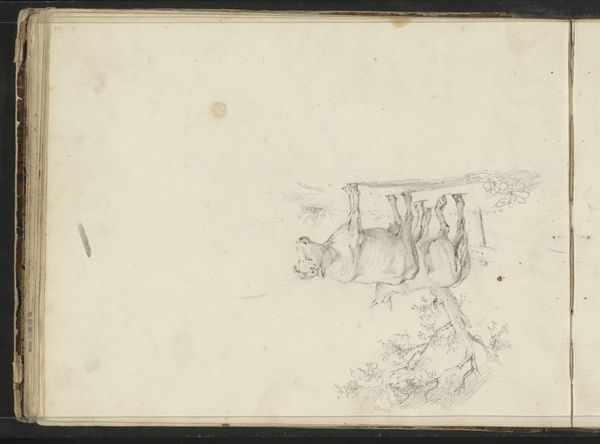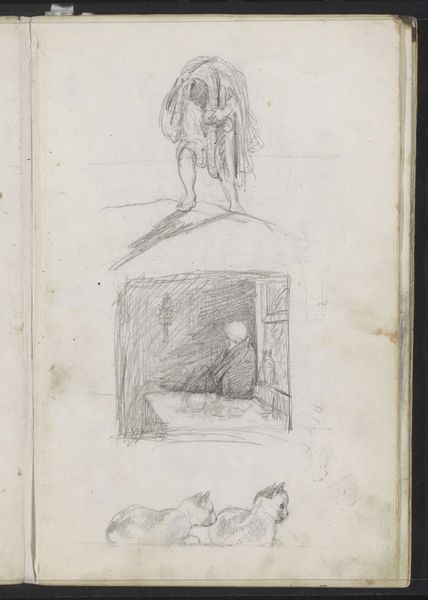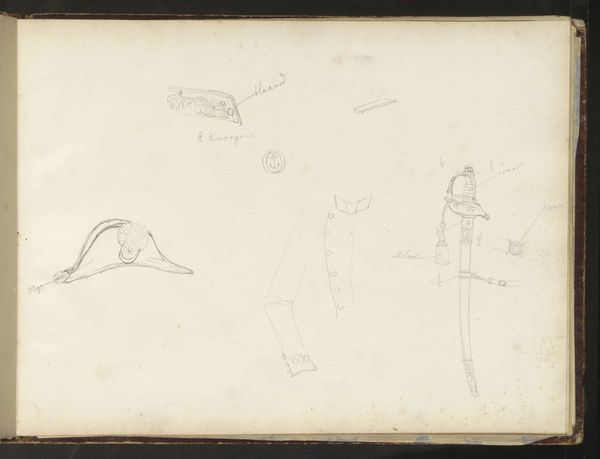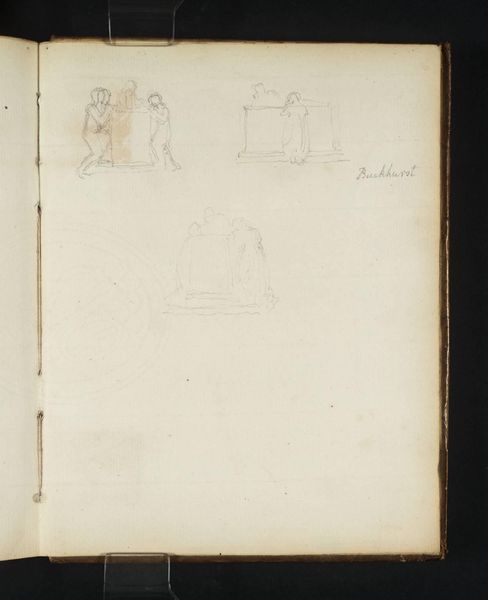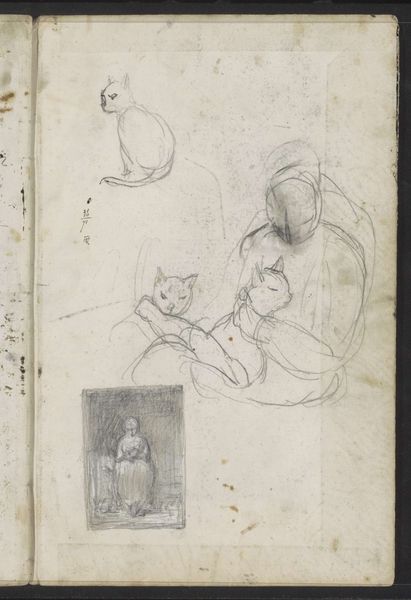
Copyright: Rijks Museum: Open Domain
Here in the Rijksmuseum we can observe "Zittende en staande figuren, vermoedelijk op een duin", a sketch made by Jozef Israëls in the 19th century. The drawing depicts figures in what appears to be a family scene. Observe the motif of the family gathering, a theme resonating across centuries. In ancient Roman art, familial depictions emphasized lineage and virtue. Later, Renaissance paintings portrayed the Holy Family, embedding religious significance into the domestic sphere. Israëls's scene evokes similar emotional ties, yet shifts towards portraying ordinary people. Consider the gesture of the embracing figures, a timeless symbol of affection, seen across cultures—from ancient Egyptian art to contemporary photography. This gesture, deeply rooted in human psychology, transcends time, serving as a powerful visual expression. The cyclical recurrence of this motif shows us the importance of family and human connection. It is clear that, across time, artists continue to express their deeply held values and beliefs.
Comments
No comments
Be the first to comment and join the conversation on the ultimate creative platform.

